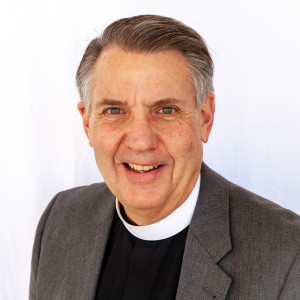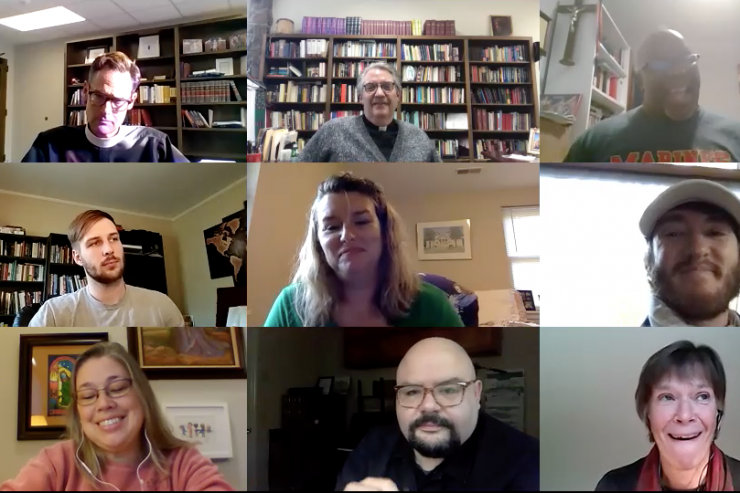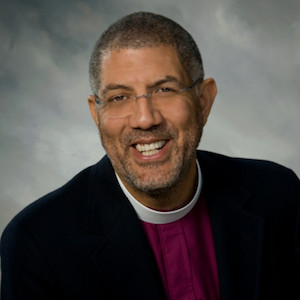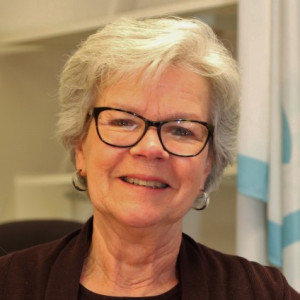In the infamous 2014 Pew Research Poll that evaluated the religious landscape of America, Mainline Protestantism featured ominously in the headline, “Mainline Protestants make up shrinking number of U.S. adults.” The article went on to describe a four-percent decline in the span of only seven years, while Evangelicalism held steady and the “Nones” (no religious affiliation) rose dramatically. A 2017 opinion piece by Ed Stetzer published in the Washington Post calculated that if the 2014 trend continues, Mainline Protestantism “has about 23 Easters left.” Stetzer, himself a cradle Episcopalian turned Evangelical, also attempts to diagnose the problem, arguing, “some mainline Protestants have abandoned central doctrines that were deemed ‘offensive’ to the surrounding culture…. The future of mainline Protestantism is connected to Christianity’s essential past, where the resurrection can be proclaimed again unabashedly. Jesus is not just a good person who suffered unjustly. Jesus’s death and resurrection makes our dead souls alive again.”
And perhaps Stetzer is on to something, the heart and soul of ministry is of course, the Gospel and the resurrection of Jesus Christ. Bringing good news to a broken world is the only way to make the Church thrive. The problem, of course, with Stetzer’s argument is not that he hasn’t identified the way forward for mainliners, but rather that he believes the issue to be dogmatic rather than pragmatic. Did so many of the religious “Nones” leave the church simply because of dogma? Or because they felt the church failed them, or the world, in some kind of larger way? Some way that removed them from the work and witness of Jesus Christ?
The Rev. Dr. William Brosend, professor of New Testament at the School of Theology of the University of the South and newly appointed director of special projects, believes that the way forward involves new approaches to training ordained leaders in the Church, revitalizing lay ministry, and doing more to emphasize the work of the Gospel in the community. He argues that doing this requires a change in focus. Rather than “looking only internally and seeing those outside only as important to the extent that they could come in and contribute to the Church,” we must “more fully recognize that the Church is an important part of the wider community, and we must find richer, deeper ways to partner with and serve that community.”

“We are developing programs for the School of Theology that address these issues of outreach and outward facing ministry and the leadership required to make that happen, both lay and ordained leadership,” added Brosend.
Inspired by the work of Monsignor Arturo Bañuelas and his work creating the Tepeyac Institute, Brosend sees these changes to be not only necessary for the survival of The Episcopal Church, but also as fundamental to creating parishioners who are disciples to the community in the way that Christ called us to be. After visiting and teaching at the Tepeyac Institute, and seeing the work of lay leaders in the El Paso community, Brosend explained, “They did what the community needed and they trained and equipped the lay people to do that. And it’s the most alive place I’ve ever been.”
A NEW FRONTIER
Brosend’s first project is to develop a series of courses and programs on leadership for seminarians, Advanced Degree Program students, and continuing education offerings for lay and ordained pastoral leaders. “We have developed a new course that will prepare students to interpret and understand the parish and its wider community, and develop and fund programs to respond to community needs and more fully and faithfully serve Christ in the Church and in the world.”

The class, called “Leadership, Innovation, and Outreach: (Re)Shaping Ministry for the 2020s,” includes “a mix of leadership studies, sociology, congregational analysis, stewardship and fundraising, and the exploration of new models for ministry” with an eye toward addressing the practical realities of “declining attendance, reduced giving, closing parishes, and aging members.”
Brosend sees this class as an opportunity to reframe ministry in The Episcopal Church. “No priest can do it by themselves. They just can’t,” asserted Brosend. And the work of the Church must become equipping the laity to lead, “developing the leadership skills to, in [Ron] Heifetz’s terms, ‘Give the work back to those who can actually do it.’”
Because of the restrictions of COVID-19, several classes have been pushed online, including Brosend’s course. In many ways, this sudden change has created a frustrating reality. Plans to get students out into the community, creating ideas for mission and ministry, have been thwarted by the virus. However, with change comes new opportunity and Brosend has made the most of Zoom. Leadership, Innovation, and Outreach is a class made up not only of seminary students, but also of seminary graduates, clergy spouses, and various notable authors and speakers from around the country.
Authors who have Zoomed in include the Rt. Rev. Rob Wright, bishop of the Diocese of Atlanta; Dr. Nancy Ammerman, professor emeritus of sociology of religion, Boston University; Dr. Mark Chaves, Duke University, director of the National Congregations Study; Dr. Kathleen Cahalan, St. John’s University, Collegeville, Minnesota, author of Projects That Matter; Dr. Robert Garris, Trinity Wall Street Foundation; and the Rev. Libby Maxwell, coordinator of Lilly Endowment, Inc.’s “Early Career Initiative."
As part of their final project for the class, seminarians must work with alumni to create and plan a ministry project that addresses the needs of their chosen community and could be put into practice in their parish. Seminarian Charles McClain, T’22, identified issues in his sending parish. “Nashville has a huge problem with affordable housing, so I thought that would be a good issue to take up. I saw that [my parish] had some property, but I never got past the stage of ‘well, what are we going to do about this?’ We’ve talked some in class about what parishes do with these buildings that sit around empty and collect dust, but that issue doesn’t get the attention it deserves.” Similarly, Taylor McCutcheon, T’21, was inspired by his own experience in the Church and identified discrepancies between his experience growing up Catholic and becoming an Episcopalian, “Something that I would love to address that I’ve experienced in my relationship with the Church is finding a better way, or a healthier ministry to incorporate the spouses of clergy and those more intimate relationships into the life of the Church. I would like to offer a ministry that’s more inclusive to that relationship.”
The alumni participating in the class are also finding their own vision for ministry changing and growing, particularly through the relationships they’re forming with the current students. The Rev. Jeremy Carlson, T’18, explained, “Bill Brosend is a master teacher. This course is the product of his keen eye for the need, within the context of a seminary education, to train tomorrow’s clergy—in both theory and praxis—to function as executive leaders in parochial settings. For my own part, I have found each of our class meetings to be a real ‘shot-in-the-arm’ for my own ministry. Certainly, the readings and course instruction are informative, but more than that, the holy collaboration that occurs during our class meetings serves to enrich and enthuse my own sense of vocation as an ordained religious leader.” Similarly, the Rev. Sara Milford, T’15, remarked, “Attending the class has affirmed for me that I’m not alone in my search for effective leadership principles, that quality worship is fundamental to us being Church but also that we need a great deal of community organizing and leadership tools at hand to successfully navigate the present moment and to bring to fruition an even more vibrant church body. I’m taking so many notes from this class, ordering more books, and making connections that are invaluable. It’s wonderful to be in a classroom setting again, but it will be most fulfilling if my experiences help or inspire others who are just entering their ministry field.”
Obviously, the issues discussed in Leadership, Innovation, and Outreach are large and complex. Yet, here are the ordained leaders of our Church coming together to ask the hard questions. How do we change the perception of outreach in our congregations? How are we failing to respond to our community’s needs? How do we raise up leaders within the laity? Ultimately, how do we live out the compelling work of the Gospel in a world that desperately needs it, particularly when the evidence shows we have been failing to do so?
LEADERSHIP
Perhaps the most well-defined aspect of Brosend’s new class is the portion on leadership, based largely on the principles of adaptive leadership developed by Ron Heifetz. As a guest for this particular class, Brosend invited Bishop Rob Wright.

Throughout the hour and a half long class, Wright preached, as is his usual style, when addressing the questions from the class. Grounded in the Gospel, Wright addressed the principles of leadership and applied them to today’s Church, arguing repeatedly that there should be no boundary between so-called corporate leadership and ministry leadership. “The best of leadership practice already has Jesus’ fingerprints and footprints on it. Just watch him walk around Galilee and mobilize people and surface conversations that otherwise weren’t surfaced, watch Him invite people into leadership to share the responsibility; watch Him talk about purpose.”
During the class, Wright provided practical steps toward building lay leadership and stories from his personal experience that spoke to the challenges he experienced and the resulting growth, both in his own personal ministry and in his parishes and diocese. Throughout, Wright referred especially to Jesus’s work to mobilize people, not just the disciples, but regular folks as well. Defining leadership as “the capacity to mobilize people to address tough problems, especially problems they’d rather avoid.” Wright sees Jesus as someone who ultimately “invited people to increase their capacity—their capacity to listen, their capacity to see, their capacity to reach out and see themselves as neighbor, their capacity to join Him in sharing responsibility for Kingdom bringing.” This means being willing to talk about uncomfortable topics, ask difficult questions, and expect your congregation to engage in the mission-building work of the Church.
Wright closed the class by encouraging the students to have courage and be willing to experiment with leadership development in their own congregations. “Jesus is no helicopter parent. Jesus respects you enough to let you fail gloriously, so you can learn,” he advised. “Leadership is experimenting with temperature until you get results.” Thus, the work of the Gospel, the work of building leaders, the work of the Church is not simply a straight-forward path, but rather the work of asking the hard questions, experimenting with what motivates your people, and equipping lay leaders to step up and take hold of the mission and ministry of the Church.
INNOVATION
While empowering leaders has always been the work of Jesus, the need for innovation is also an ever-present aspect of ministry. Yet, the desire to find comfort in our routines has stifled much of the innovation needed to keep the Church alive. Christopher Schwenk, T’22, remarked, “We’ve viewed the priesthood and pastoral ministry as a well-oiled machine for 300 years in this country and now we’re at a turning point in the life of the Church, where we’ve figured out that the well-oiled machine is not so well-oiled after all. I believe that the decline in the Church can largely be explained by the resistance to generation continuity and resistance to changing our cultural values with those generations, and I think you can do that without changing the fundamentals of the faith, the fundamental theology that rests at the core of everything.”
Thus, the need for innovation is not something which ideologically or theologically changes who we are, as Stetzer believes, but rather the acknowledgement that the way the core tenants of our faith apply to a new and rapidly changing world.
“Innovation may mean doing something that we’ve always done in a different platform, because of the world we’re living in. Or, it might mean taking a platform that we’ve always used and doing something different with it,” asserted the Rev. Allison Caudill, T’19. Innovative thinking doesn’t necessarily have to mean throwing out every bit of ministry we’re currently doing. Instead, it means thinking about how the Church can engage not only with the problems within their own walls, but also with the problems facing the wider community and the world.
Brosend sees this modified, innovative way of thinking as revealing a new approach to ministry within the community. “Instead of a church saying, ‘there’s a need or there’s a problem and we’ve got to fill the need or solve the problem,’ they would say, ‘we’re in the midst of a community that’s filled with gifts and possibilities and how do we help those come to life.’ It’s a shift in how we understand what needs to be done, which requires innovative thinking about partnerships and letting go of control.” Of course, the third focal aspect of the class, Outreach, obviously becomes key. Seeing the Church as the nucleus of a community rather than as a separate section of the community is a key part of innovative thinking.
OUTREACH
One of the difficulties of outreach expressed by almost everyone in the class was figuring out how to change the mindset of the change and its attitude toward outreach. Dr. Nancy Ammerman spoke to the class about congregational development, and particularly about how outreach done well shapes the members of a church. Discussing mission projects with students, Ammerman would ask, “For whose sake are you making changes?” prompting students and ordained clergy alike to discuss who was actually benefiting from their outreach initiatives. “A pitfall that I think a lot of Episcopal parishes fall into is doing outreach for the sake of personal growth, as opposed to care and altruistic behaviors toward the community,” Caudill stated.

“The church approaches outreach as, ’If we do this cool program, people will learn about it and come here for 11 o’clock worship,’” Brosend agreed. “Outreach is not for the sake of a church, it’s for the sake of the community and the people beyond the church.”
Thus, outreach draws together the two previous aspects of Brosend’s class. Obviously, a church’s leadership and its members must feel empowered by the work of the Gospel to go out into the world and share the good news. And, because of our traditional, attractional model that relies on people coming through the doors of a church, we can no longer rely on the same sort of thinking to keep that church alive. Instead, innovative thinking about a church’s relationship to its community necessitates a different relationship between the two.
“I think there’s a lot of catastrophizing over the death of the Church, and I think people’s natural reaction to that is to hoard resources,” remarked Schwenk, “but we have to ask ourselves what priorities lay behind our money? Show me your budget and I’ll tell you what your values are.”
This approach to outreach was reflected in how Ammerman encouraged the class to quantify their work in the field. Caudill explained this as “Looking at [outreach] not just from a quantifiable number of how many people we fed, but also asking ‘How many of our parishioners or community members were engaged?’ ‘How many relationships are being built and how are those relationships being sustained?’ ‘How is all of this making us better disciples and Christians?’”
Meaningful outreach requires us to “look at people for what they have, not what they lack,” argues Brosend. If we are not willing to understand who we are and who our partners in the community can be, then we can never engage in meaningful outreach. Thus, the object of outreach is never to grow each individual church, but rather to engage in the work of growing the ministry of Jesus Christ. Thus, the work is quantified by the impact of a church on its community.
THE FUTURE OF MINISTRY
Perhaps promisingly, the most recent General Social Survey in 2018 saw “a small uptick in the number of people who identify as mainline Protestants—their first increase in nearly 20 years.” But what exactly does this mean and will those numbers be sustained after the impact of COVID-19, political turmoil, and economic crisis in the U.S.A.? Arguably, times of difficulty should point toward a growing need for the Church, rather than a reason for its decline. A community that loves and cares for one another with the boundless love of Christ is of the deepest need. Reconciliation and justice are of the deepest need. But if we fail to ask the right questions, the anxiety of COVID-19 becomes yet another stressor for the Church, rather than an opportunity to lead God’s people through difficulty and pain toward the promise of resurrection.
Brosend’s class is one piece in solving that puzzle. It is “one step in preparing our seminarians for a very different and rapidly changing ministry environment that gives the right amount of weight to outward facing ministry, both in terms of evangelism and in terms of participation in the life of the communities surrounding the Church.”
While this may seem a heavy burden to bear for our clergy and laity, that sort of thinking points toward the exact problem. The people of God, all of them—ordained, lay, and non-members—are responsible for this kingdom-bringing work. Those working in the community are equal partners in this ministry, though the Church has often not thought of them as such.
In his letter to the Romans, Paul asks, “how are they to call on one in whom they have not believed? And how are they to believe in one of whom they have never heard? And how are they to hear without someone to proclaim him? And how are they to proclaim him unless they are sent? As it is written, ‘How beautiful are the feet of those who bring good news!’” This sharing of the Gospel is, of course, the work of the Church. But what is beautiful is not the Church, but rather the feet of the bearers of good news. Next year’s graduating class from the School of Theology will certainly be bringing this good news, not just to our churches, but to our communities as well.
